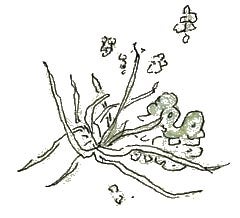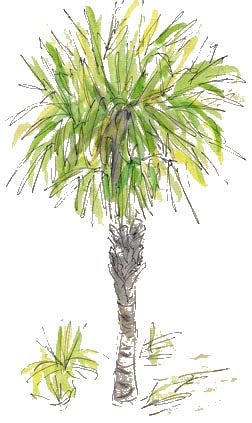We arrived in Charleston a day before our cruise.








We sailed on a small US-built cruise ship (74 passengers) through a section of the country that we knew little about. Our trip started in Charleston, SC, and ended on Amelia Island in FL.
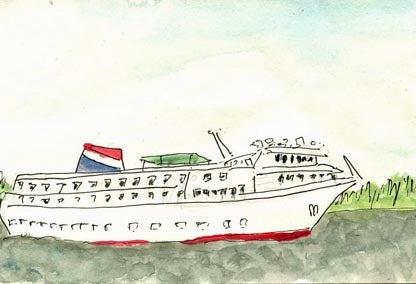


We traveled in shallow waterways through low country with little elevation to the landscape, other than the occasional sand dune. Tidal marsh, mostly Spartina grass, covered both sides of the channel.
In the past the freshwater marsh was used for cultivating rice, a crop requiring extensive labor, hence the dependence on slavery and the plantation system that dominated this area. Other important crops were indigo (before the revolutionary war) and later, sea island cotton, a long-fiber cotton of great value.
First stop after Charleston was Beaufort, SC — that’s “Beau” as in “beautiful” not “Bow” as in Beaufort NC. Seems a good way to keep them straight. We don’t know how they deal with Charleston in both states.

From Beaufort we visited Gullah (perhaps a corruption of Angola) communities, and learned about the history of Penn School, the first school for slaves in the Deep South. We heard much about the Civil War, or as the locals pronounced it, “The Woewah” (2 syllables).
We visited a slave and descendants cemetery (where all were buried facing east toward home in Africa). Miss Eveline told us about the local culture and sang (she has a beautiful singing voice) in a very small old prayer house.
Beaufort is a lovely small city on the water with comfortable homes and more of the ubiquitous live oak and Spanish moss.

Our next shore stop was Hilton Head island. We rented coaster bikes (took some getting used to) and rode through Sea Pines, a planned development with abundant wildlife. There were a jillion families on the bike paths (still spring-break season).



Savannah is a jumping place — lots of harbor activity.


We skipped the Trolley Tour and walked around to see the sights. Savannah is a beautiful city, laid out by James Oglethorpe around 23 green squares with fountains and statuary.
Wright’s Square
Chippewa Square, Oglethorpe statue and lamppost
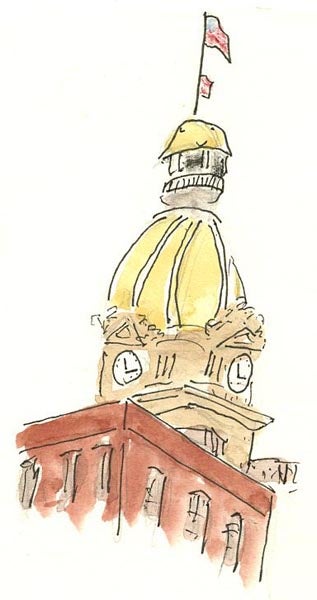

We learned how Savannah was saved by the “great skedaddle.” The slave holders fled leaving everything behind (they expected to return within a few weeks). The Confederate general surrendered to save the city from being torched. Sherman presented Savannah as a present to Lincoln.
After Savannah, we docked in Brunswick. We took the boat’s launch to Sapelo Island. There are many, many islands in the area — sea islands inland and barrier islands along the ocean. There is no bridge to Sapelo. Many of the people living there are direct descendants of former slaves.


Sapelo was once owned by R. J. Reynolds and the mansion is available for rental — weddings, conferences, etc.
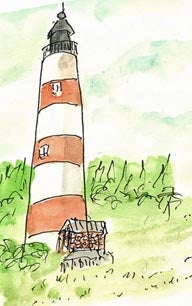


This part of the coast is the Georgia Bight and it generally is protected from hurricanes.
We passed on visiting the mansions of Jekyll Island and seeing St. Simons Instead, we explored Brunswick. It had once been a thriving city with a lumber and ship building industry. But now many of the shops were shuttered and the downtown area was dead. The homes were nice and the downtown and waterfront areas were well-maintained. It was sad to see.
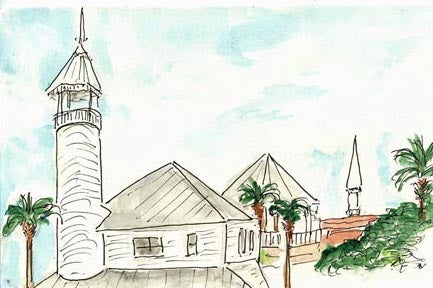
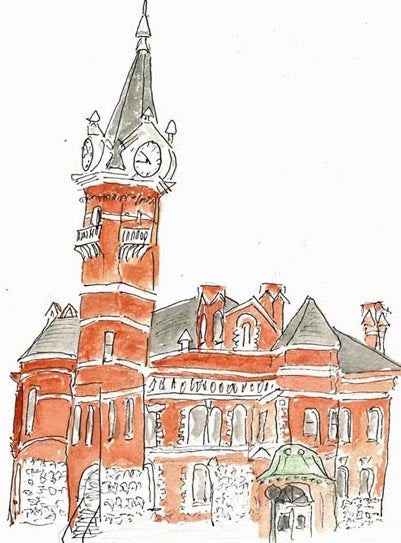


“Lost Cause” confederate memorial in Hanover Square.
Barb likes to draw street lamps.
Like Savannah, Brunswick was laid out on a grid with many green squares.

Despite the depressed economy, there was a marina with 16 docks housing pleasure boats, some expensive.

Our cruise ended at Fernandina Beach, a historic town on Amelia Island, FL. We stayed an extra day exploring this beautiful town. Eight flags have flown over the island — France, Spain, England, the Patriots of Amelia Island, Mexico, United States, the Confederacy, and the Green Cross from a self-proclaimed ruler.
On the beaches of nearby Cumberland Island (home of a Carnegie mansion) people searched for sea shells and sharks teeth. There are wild horses on the island. The population stays constant as they are short-lived due to a grass diet high in salt.


We visited the Saturday Farmer’s Market and the Artrageous walk (open art galleries) that evening. The art was good and the locals very friendly.



